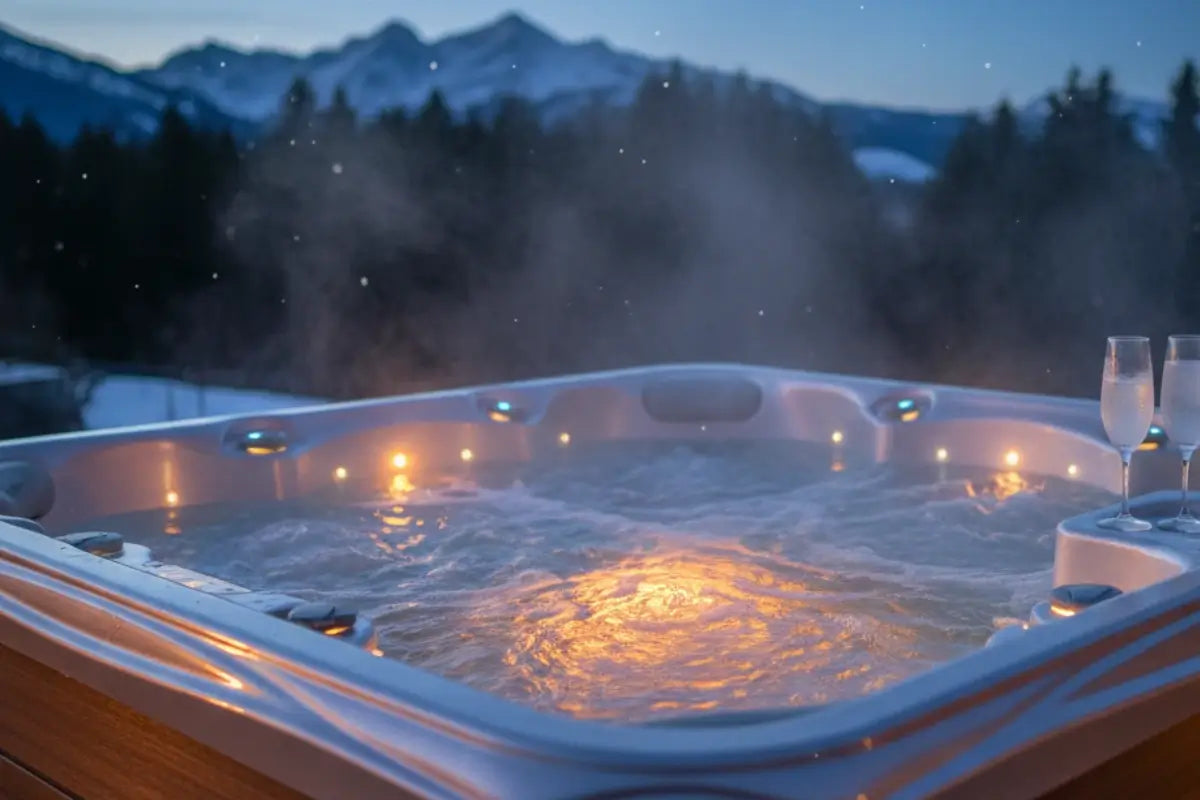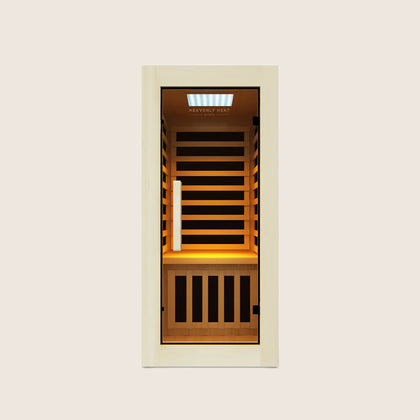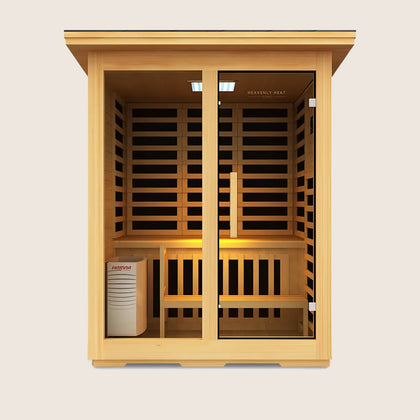3 Reasons Not to Pee in a Hot Tub

Using a hot tub feels relaxing, but some habits can ruin the experience for everyone. Peeing in the water isn’t just gross, it can create harmful chemicals, irritate your skin and eyes, and spread bacteria. If you want to enjoy a safe, clean, and worry-free soak, keep reading to learn why it matters.
Key Takeaways
Keep the Water Clean: Avoid peeing in a hot tub to prevent harmful chemical reactions with chlorine or bromine.
Protect Your Health: Urine in hot tubs can promote bacteria, cause skin or eye irritation, and increase infection risks.
Respect Others’ Comfort: Proper hygiene and etiquette ensure a safe, enjoyable experience for everyone.
Manage Soak Time and Temperature: Limit your time and monitor water temperature for safety, especially for children, pregnant women, and older adults.
Maintain and Monitor: Regularly clean your hot tub, balance chemicals, and supervise use to prevent accidents and health hazards.
3 Reasons Not to Pee in a Hot Tub
Reason 1: Chemical Reactions – How Urine Affects Sanitizers
Peeing in a hot tub isn’t just unpleasant, it actually triggers chemical reactions that can harm your health.
Research from the University of South Carolina shows that disinfectants like chlorine and bromine, added to eliminate bacteria, react with bodily fluids such as sweat and urine.
These reactions produce chemical byproducts that can be inhaled, swallowed, or absorbed through the skin.
A study by Ostojić Krsmanović & Crnčević Radović (2018) highlights that nitrogen compounds in urine react with chlorine to form chloramines.
Not only do these compounds reduce the sanitizer’s effectiveness, but they also create more harmful disinfection byproducts.
According to Chemical Safety Facts, chloramines are responsible for the strong “chlorine smell” often noticed in pools and hot tubs.
The most concerning, trichloramine, forms when chlorine interacts with ammonia from urine, causing eye and skin irritation and even respiratory problems.
In short, every time someone pees in a hot tub, the water becomes less clean, more chemically hazardous, and less safe for everyone enjoying it.

Reason 2: Health Risks – Bacteria, Infections, and Irritation
Peeing in a hot tub isn’t just gross, it can seriously affect your health. The Cleveland Clinic explains that when urine mixes with chlorine, it forms chemical compounds that may irritate your skin, eyes, and even your respiratory system.
Hot tubs also create a perfect environment for bacteria such as Pseudomonas aeruginosa, known for causing hot tub rash and urinary tract infections.
Europe PMC reports that healthy individuals developed UTIs after using whirlpool baths contaminated with Pseudomonas, which was traced directly to the tubs.
The risks don’t stop there: the CDC highlights outbreaks of Legionnaires’ disease linked to private hot tubs on cruise ships, and the MMWR 2024 report details how insufficient cleaning and lax operating protocols allowed Legionella bacteria to thrive.
These examples show that what might seem like a harmless shortcut, urinating in a hot tub, can quickly turn a relaxing soak into a potential health hazard. Proper hygiene is essential to keep your soak safe and enjoyable.
Reason 3: Hygiene and Etiquette – Keeping Everyone Comfortable
Peeing in a hot tub isn’t just unpleasant, it can upset the water’s balance and make the experience uncomfortable for everyone.
Even a small amount of urine doesn’t simply vanish; it reacts with chlorine to form irritating byproducts known as chloramines.
These compounds can turn into gas, causing eye and lung irritation, and making the hot tub less safe and enjoyable.
Research published in Environmental Science & Technology Letters highlights how urine adds nitrogenous organics to pool and spa water, which interact with chlorine to create volatile N-Cl-amines.
Scientists have even tracked synthetic sweeteners excreted in urine to estimate human contributions in hot tubs, finding 30 to 75 liters added over just a few weeks in standard-sized pools.
Beyond the chemistry, peeing in shared hot tubs is a matter of etiquette, it impacts everyone’s comfort.
Respecting hygiene rules and keeping the water clean ensures a safer, more pleasant soak for all users.
Hot Tub Maintenance After Urine Contamination
Act Fast: Don’t stay in contaminated water to avoid exposure to harmful bacteria.
Drain Completely: Empty all water from the hot tub immediately.
Scrub Surfaces: Clean and disinfect all surfaces thoroughly.
Check Chemicals: Test and balance pH and sanitizer levels.
Shock the Water: Use a strong sanitizer to fully disinfect the tub.
Clean Filters: Wash or replace filters to remove lingering contaminants.
Prevent Future Accidents: Set rules and educate users to avoid repeat contamination.

Hot Tub Etiquette and Preventive Measures
Personal Hygiene Before Entering
Taking a quick shower before stepping into a hot tub can make a big difference in keeping the water safe and enjoyable for everyone.
The AARP Hot Tub Safety Article notes that showering for just one minute can remove roughly 70% of contaminants from your skin, including sweat, dead skin cells, and personal care products like deodorant or cologne.
The Centers for Disease Control and Prevention also highlights that skipping this step can introduce bacteria, viruses, and other microorganisms into the water, which may be inhaled, swallowed, or come into contact with the skin, increasing the risk of hot tub–related illnesses.
Research shows that pre-soaking hygiene significantly reduces the workload on filters and water care systems, keeping the hot tub clean and balanced.
To further protect your health, it’s a good idea to shower after using the hot tub as well, rinsing away residual chemicals.
Following this simple routine keeps both you and other bathers safe while making the experience more enjoyable for everyone.
Appropriate Swimwear and Behavior
Enjoying a hot tub safely begins with clean swimwear and responsible behavior. Health authorities, guided by the Regulation respecting water quality in swimming pools and other artificial pools, emphasize that wearing proper swimwear reduces contaminants, helping disinfectants like chlorine, bromine, salt systems, and ozone work effectively, especially when many bathers share the tub.
Poor hygiene can introduce sweat, oils, and personal care products, which reduce disinfectant efficiency and create irritating byproducts such as chloramines or bromamines.
Following safety rules is just as crucial: avoid running, diving, jumping, yelling, or bringing glass containers.
Submerging your head, eating, or drinking in the tub can increase the risk of infections and accidents.
Children require careful supervision, water temperature below 100°F, and clear guidance on safe behavior.
Staying hydrated before and after hot tub sessions also helps prevent dehydration from prolonged heat exposure.
By combining clean swimwear, mindful conduct, and simple precautions, everyone can enjoy a safe, comfortable, and hygienic hot tub experience.
Managing Time and Water Temperature
Relaxing in a hot tub can be a wonderful way to unwind, but it’s important to pay attention to both how long you stay in and the water temperature.
For most adults, water should stay below 104°F, with shorter soak times as temperatures rise, around 15–20 minutes for 103–104°F, and 30–45 minutes for milder temperatures of 98–100°F, which are safer for children and pregnant women.
Pregnant women, young children, older adults, and anyone with health conditions or seizure disorders should take extra precautions and ideally have someone nearby.
Alcohol, low blood pressure, or limited mobility can increase the risk of fainting or accidents, while germs such as Legionella or Pseudomonas can cause infections if water is swallowed or inhaled.
To stay safe, shower before entering, check water chemistry, and take regular breaks. By listening to your body and keeping the temperature moderate, you can enjoy a soothing, safe hot tub experience every time.
Health Precautions and Restrictions
Not everyone should use a hot tub. People with heart conditions or high blood pressure risk strain from hot water.
Pregnant women should avoid hot tubs because heat can harm the baby. Children can only use hot tubs under supervision and for short periods.
Anyone with a weakened immune system or certain medical conditions should avoid them to prevent infections. Following these precautions keeps everyone safe and healthy while enjoying a hot tub.
Respecting Others and Sharing Space
When using a shared hot tub, it’s essential to think about how noise and time limits can affect everyone’s experience.
Even small sounds, like loud conversations or outside noise from traffic, can disrupt the calming environment and hinder relaxation.
Research shows that things like how far voices travel can actually influence how well we unwind.
By being mindful of noise levels, everyone can have a more enjoyable and peaceful experience.
Public health guidelines recommend limiting hot tub sessions to 15 minutes at 37°C to avoid overheating or dehydration.
This helps keep things safe while allowing everyone to relax comfortably. Respecting these simple etiquettes helps maintain a space where everyone can unwind and benefit from the soothing qualities of the hot tub.
Hot Tub Maintenance Awareness
Clean your hot tub at least once a week and wash the filters every couple of weeks to remove debris.
Watch for signs like strange smells, cloudy water, or unusual noises, these mean it needs maintenance.
Keep the water balanced and clear to prevent bacteria, protect your skin, and ensure everyone enjoys a safe soak.
Regular maintenance prevents problems, avoids cloudy water, and extends your hot tub’s life. Following these steps shows respect for others and keeps your hot tub in top shape, making every use safe, hygienic, and worry-free.
Preventing Accidents and Injuries
Hot tub accidents happen from slipping, overheating, and overcrowding. Keep the area dry and use non-slip mats to prevent falls.
Keep water below 104°F to avoid burns. Supervise children at all times and limit the number of users.
Stay clear of drains and suction fittings to prevent entrapment. Following these simple rules protects everyone and ensures a safe hot tub experience.
FAQ
Can peeing in a hot tub cause urinary tract infections?
No, peeing in a hot tub doesn’t directly cause UTIs, but it can promote bacterial growth. Shower before and after, change wet swimsuits, and maintain clean water. Staying hydrated, not holding urine, and proper hygiene help prevent infections. Similar benefits include reducing skin irritation and improving comfort in warm water.
Can peeing in a hot tub cause skin or eye irritation?
Yes, urine mixes with chlorine to form chloramines, causing itchy skin, red eyes, and breathing issues. Shower before entering, keep water properly sanitized. Regularly cleaning hot tubs, rinsing off sweat, and using swim diapers for kids can also reduce irritation and keep water safe.
What are safer alternatives when you “have to go to pee” in a hot tub?
The safest alternatives to peeing in a hot tub include stepping out to use a nearby restroom, planning bathroom breaks before soaking, and limiting diuretic drinks. In emergencies, waterproof swim diapers or urination devices may be used. Avoiding urination prevents chloramine formation, protecting water quality and health.





























